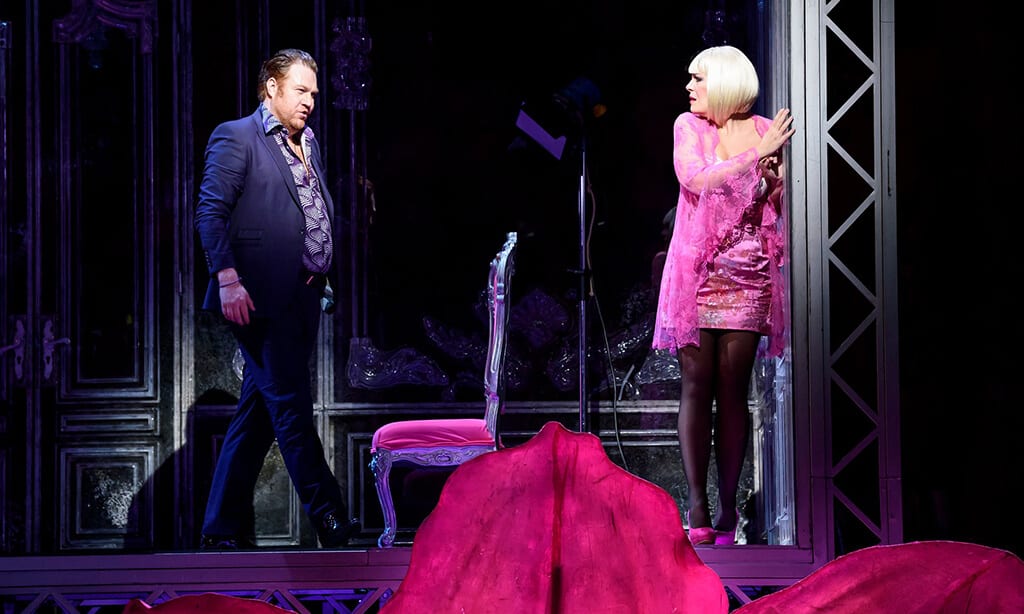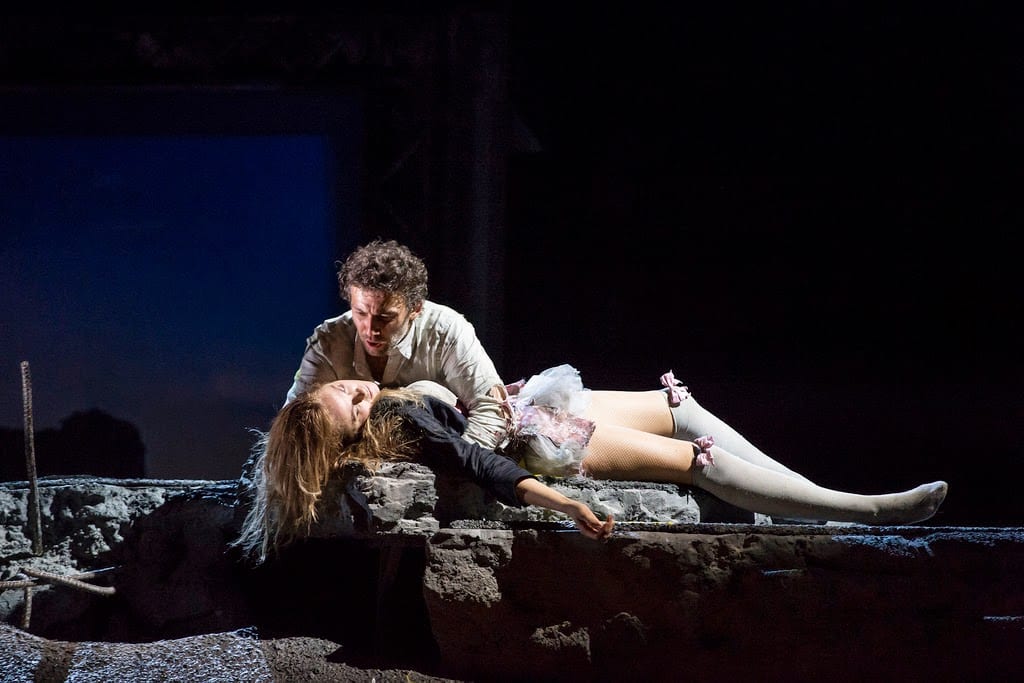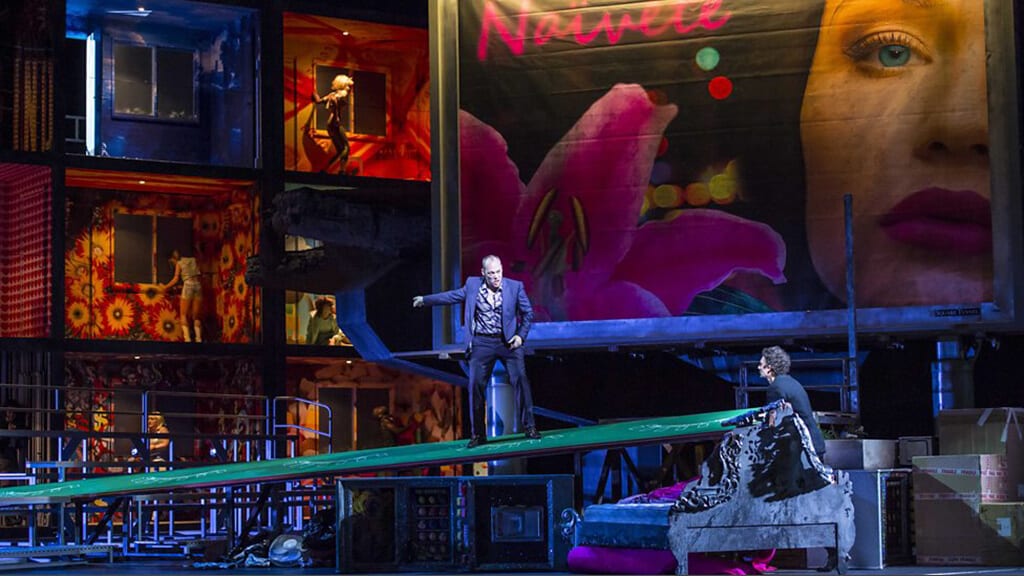The first revival of Jonathan Kent’s production of Manon Lescaut stirs strong emotions as it undoubtedly must have when it premiered back in 2014. Puccini’s opera, based on L’histoire du chevalier des Grieux et de Manon Lescaut by the Abbé Prévost, essentially tells the story of a fallen woman, a woman used as an object of desire and display by her husband, as a means to climb the social ladder by her ambitious brother, but a woman who was always loved sincerely by her lover Des Grieux. The element of female objectification in this production is brought out to an extreme in all its crudeness both in the acting and in the staging, and can easily resonate with a contemporary audience. In the second act, for example, there’s a kitschy pink bedroom on stage in which Manon acts like a porn star surrounded by a group of old voyeurs. During the third act, fallen women are showcased in boxes inspired by the windows in the red light district of Amsterdam and are afterwards paraded and mocked in a sort of television show.
However there is more to the opera than this raw materialistic context: “Naïveté” says a giant poster in the staging of the third act, and this is definitely one of the keys to the heart of the composition. A naïf youthful folly drives Des Grieux’s actions throughout. An inexperienced 18-year-old, Manon, in the beginning, is easily corrupted by the glitters of a luxurious life, while love passion paves the way to the inevitable tragedy.
Puccini’s music plays a lot with these contrasting elements: the very first measures, for example, present a fresh, youthful, almost cheeky musical phrase immediately superseded by a tense romantic melody. Or in the second act, the light-hearted music of a whimsical Manon gives way to an intense aria, “In quelle trine morbide”, when the memory of true love enters the emptiness of her life. For sure, conductor Antonio Pappano interprets Puccini’s score skilfully and brings all these dynamics to life, as well as the Wagnerian nuances of the famous intermezzo. He understands when to accompany the singers lightly, or when to overwhelm the audience with fortissimos.
The evolution of the character of Manon from a naïf girl, to a courtesan, to an outcast, to a desperate dying woman, was interpreted outstandingly by Sondra Radvanovsky. She possesses a very powerful and well controlled voice. But what was really striking was the sapient use of pitches and colours ranging from bright in the beginning, to sensual, to dark in the finale. Not only her singing and acting were really apt but she also entered into the psychology of the character with such a rarely seen finesse. Aleksandrs Antonenko, after warming up, sang the passionate tenor lines of Des Grieux with intensity. But he wasn’t convincing as a young student; a more youthful approach would have benefited the rendering of the role. The manipulative and ambitious Lescaut, however, was interpreted with great charm and liveliness by baritone Levente Molnar.
In the end, the tragic finale is staged on a crumbled, steep road, highlighting the loneliness and alienation of the couple and inevitably signalling the end of their journey.
Overall, the performance is compelling and vivid with great music and top interpreters. Not to be missed.




